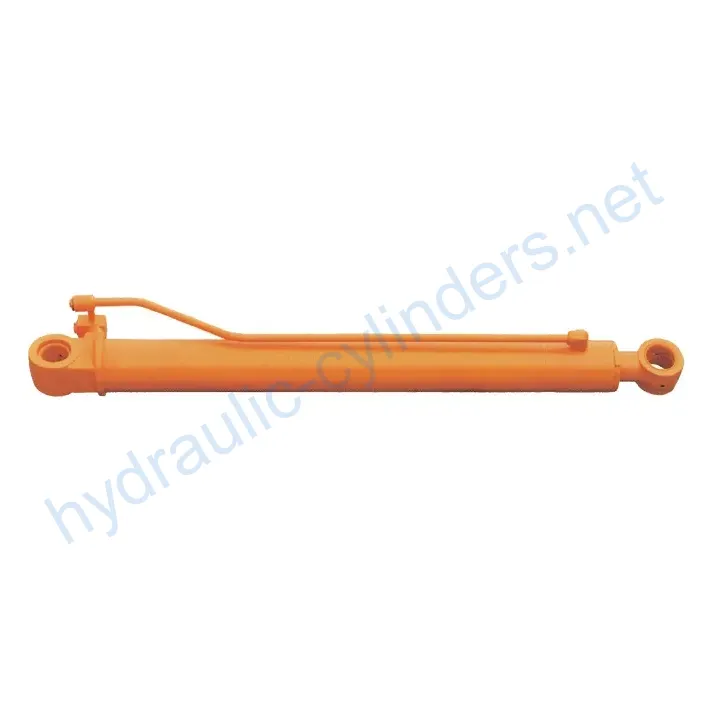Arm CylinderFor Hyundai Middle Excavator R200LC
En tant que fabricant, fournisseur et exportateur de produits mécaniques, nous proposons des vérins hydrauliques et de nombreux autres produits.
N'hésitez pas à nous contacter pour plus de détails.
Courrier :sales@hydraulic-cylinders.net
Fabricant fournisseur exportateur de vérins hydrauliques.
Arm Cylinder For Hyundai Middle Excavator R200LC
Product Definition
An arm cylinder is a specially designed hydraulic cylinder that provides linear motion and power for the arm of various machinery, such as excavators, cranes, and robotic arms. The arm cylinder plays a crucial role in hydraulic systems, allowing for efficient movement and control of additional tools or attachments. These cylinders not only enable smooth motion but also withstand heavy loads, ensuring high efficiency and reliability of the machinery in various operating conditions.

Product Features
-
High-Efficiency Power Transmission
The arm cylinder provides powerful linear motion and force, ensuring high-performance efficiency for the machinery arm in various operations.
-
Contrôle de précision
Through the hydraulic system, the arm cylinder enables precise motion control, allowing for flexible and accurate operation of the attached tools.
-
Durability
Arm cylinders are typically made from high-strength materials, offering excellent wear and corrosion resistance, making them suitable for long-term use in harsh environments.
-
Multi-Functional Adaptability
These cylinders can be widely applied to various machinery equipment such as excavators, cranes, and robotic arms, adapting to different working requirements.
-
Easy Maintenance
Designed with ease of maintenance and replacement in mind, regular inspections and servicing become more convenient, reducing equipment downtime.

Applications
The arm cylinder finds applications in various industries:
-
Construction Engineering
In excavators and cranes, the arm cylinder controls the movement of buckets or booms for earthmoving, material handling, and structural installation.
-
Manufacturing
In automated production lines, the arm cylinder facilitates the motion of robotic arms for assembly, welding, and handling processes, improving production efficiency and accuracy.
-
Agricultural Machinery
In agricultural equipment such as harvesters and seeders, the arm cylinder controls the movement of operating arms, performing tasks like seeding, fertilizing, and harvesting.
-
Mining
In mining equipment, the arm cylinder controls the arm movement of mining machinery, enabling ore excavation and transportation.
-
Logistics and Transportation
In forklifts and handling robots, the arm cylinder controls the lifting and movement of forks, facilitating material handling and stacking operations.
Design Considerations and Selection Criteria
When designing and selecting arm cylinders, various factors should be taken into account:
-
Load-Bearing Capacity
The arm cylinder should be capable of withstanding the expected loads during operation to ensure safe and efficient performance.
-
Sealing
Using various sealing elements such as piston seals and rod seals made from wear-resistant materials like polyurethane and nitrile rubber to maintain proper sealing and prevent fluid leakage.
-
Durability
The construction of the cylinder body and threaded ends should undergo precision treatments to enhance wear resistance and prolong the cylinder’s lifespan.
-
Safety
Ensuring appropriate safety measures are in place, such as overload protection and safety valves, to prevent system failures and accidents.
-
Maintainability
Regular lubrication with hydraulic oil and periodic inspections are necessary to maintain optimal performance and extend the life of the arm cylinder.

Sealing and Lubrication
The arm cylinder incorporates various sealing components, such as piston seals and rod seals, which are made from wear-resistant materials like polyurethane and nitrile rubber. The cylinder body and threaded ends undergo precise treatments to improve wear resistance. Regular lubrication with a suitable amount of hydraulic oil ensures proper lubrication and smooth operation.
Regular Inspection and Preventive Maintenance
Regular inspections and preventive maintenance are essential for ensuring the long-term performance and reliability of the arm cylinder. Key measures include:
-
Inspecting for leaks or damage
Checking for any signs of leaks or damage in the cylinder body, seals, and connections.
-
Inspecting hydraulic hoses
Examining hydraulic hoses for wear, cracks, or other issues that may affect performance.
-
Lubrication maintenance
Regularly lubricating the arm cylinder with the recommended hydraulic oil to ensure smooth operation.
Product Installation Guidelines
Proper installation of the arm cylinder is crucial for optimal performance. Follow these guidelines:
-
Prepare the mounting area
Clean and inspect the mounting area to ensure it is free from debris and suitable for installation.
-
Align the cylinder
Align the arm cylinder with the mounting bracket or connection points, ensuring proper fit and alignment.
-
Secure the cylinder
Tightly secure the cylinder using appropriate bolts and fasteners, following the manufacturer’s specifications.

Safety Considerations and Environmental Factors
When using arm cylinders, it is crucial to prioritize safety measures to prevent accidents and ensure operator well-being. Implementing proper safety precautions, such as training operators and using safety devices, is essential for safe operation. Additionally, considering environmental factors, such as proper disposal of hydraulic fluids and adherence to environmental regulations, helps minimize the impact on the environment.
Troubleshooting and Common Issues
Here are some common troubleshooting tips for arm cylinders:
-
Leakage
If there is fluid leakage, inspect the seals and connections for damage or wear and replace them if necessary.
-
Irregular Motion
If the arm cylinder exhibits irregular or jerky motion, check for blockages or contaminants in the hydraulic system and clean or flush as needed.
-
Loss of Power
If the arm cylinder lacks power, examine the hydraulic pump and other components for potential issues, such as low fluid levels or mechanical failures.
By following these troubleshooting tips and implementing preventive measures, readers can effectively diagnose and resolve issues while minimizing potential problems.

Author: lyl
Visitez notre usine de RV :
Visitez notre usine de RV avec les éléments suivants
Vérin hydraulique Application :


